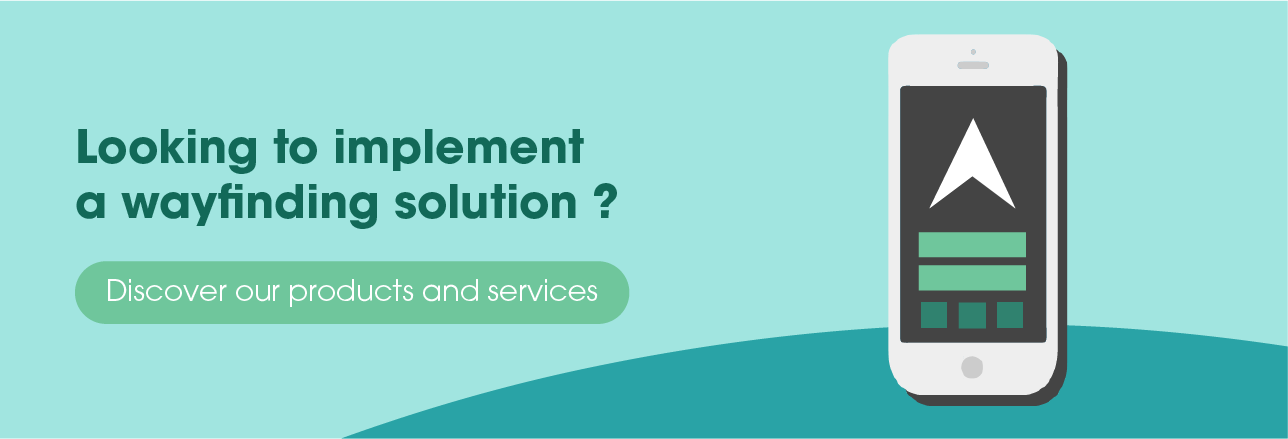
9 Tips to Make a Person with an Intellectual Disability Feel Welcome
- Smile!
- Stay natural
- Do not infantilize your conversation partner
- Be patient
- Use a simple and clear language
- Add other mediums to your communication
- Offer to help
- Do not take offense
- Avoid clichés
You’re facing a person with an intellectual disability and you don’t know how to exchange with them? Everybody can feel uncomfortable seeing we don’t always know how to approach, or help if necessary, a person with disabilities. Whether you are a tourism professional who needs keys to welcome a person with an intellectual disability in your establishment or a curious citizen who wants advice in order to easily communicate with a colleague with an intellectual disability, these tips are made for you!
What is intellectual disability?
Intellectual disability comes from a learning disability. Generally appearing from birth, it’s characterized by learning difficulties and an intellectual development that’s inferior to the population average. People with an intellectual disability have trouble thinking, conceptualizing, communicating and making decisions.
Trisomy 21 (or Down syndrome) is the most well known genetic disorder that leads to an intellectual disability but other syndromes exist such as Fragile X, Prader-Willi or Smith-Magenis…
Around 7 million people have intellectual disabilities in the United States. (Our article Disabled People in the World in 2019: Facts and Figures details all the figures about the types of disabilities.) How to easily communicate with them and make them feel welcome?
1. Smile!
There’s nothing like a beautiful and sincere smile to put at ease your conversation partner! Keep in mind that we can draw a lot of emotions thanks to our facial expressions!
2. Stay natural
When facing a person with an intellectual disability, the best thing to do is to address them the same way you would anyone. Using a warm tone devoid of pity!
3. Do not infantilize your conversation partner
Remain civilized and respectful in all circumstances, even if their behavior can seem childish to you.
4. Be patient
Take your time to truly listen to the person in front of you and adopt a reassuring attitude. Let the person speak and react at their own pace. Also be patient when you inform or guide a person with an intellectual disability.
5. Use a simple and clear language
Opting for a language devoid of technical and specialized terms or unnecessary details will help you get your message across.
6. Add other mediums to your communication
A written text, an image or even body language can be useful when the person in front of you has trouble understanding you or memorizing information.
7. Offer to help
Of course you can offer to help but don’t get offended if the answer is negative. A person with an intellectual disability can indeed be autonomous according to the situations and their capabilities so it’s best not to impose your help even though you have good intentions in the first place.
8. Do not take offense
Some behaviors or attitudes can seem strange to you but there’s no need to take offense.
9. Avoid clichés
Keep finding out about people with disabilities and how to behave around them. Our article 8 Clichés about Intellectual Disability can complete these tips.
Implementing a simple yet efficient signage system with colored icons and easy-to-understand words help facilitate the inclusion of people with intellectual disabilities in establishments open to the public. As you can see, it’s easy to make them feel welcome in any type of situation!
media

Take your time to truly listen to the person in front of you and adopt a reassuring attitude.
writer

Carole Martinez
Content Manager
stay updated
Get the latest news about accessibility and the Smart City.
other articles for you

Open Data Is Key to Fostering Universal Accessibility
Open data represents an opportunity for cities to reach universal accessibility. It shows the missing links of the mobility chain.
Our Audio Beacons Guide the Blind and Visually Impaired at the Helsinki Subway
The Helsinky subway improved their audio signage system by installing on demand and remotely activated audio beacons.
7 Good Reasons to Install Audio Beacons at Your Public Transport Network
Audio beacons are an efficient way to provide more autonomy to blind and visually impaired people. They can easily use public transport.

Will Remote Activation Become the Norm for Accessible Pedestrian Signals?
More and more cities like New York have been exploring remote activation to trigger accessible pedestrian signals.
share our article!
more articles

Disability Statistics in the US: Looking Beyond Figures for an Accessible and Inclusive Society
Disability Statistics in the US: Looking Beyond Figures for an Accessible and Inclusive Society Around 61 million adults in the United States live with a disability. Diving into disability statistics in the US will help us know exactly who is concerned and what...
Our Audio Beacons Guide the Blind and Visually Impaired at the Helsinki Subway
Our Audio Beacons Guide the Blind and Visually Impaired at the Helsinki SubwayOur audio beacons equip the new line of the Helsinki subway in Finland. They help blind and visually impaired people locate the points of interest of a station. For users with visual...

Will Remote Activation Become the Norm for Accessible Pedestrian Signals?
Will Remote Activation Become the Norm for Accessible Pedestrian Signals?Without pushbutton, there are no accessible pedestrian signals. That’s how APS work in the U.S. But more and more cities have been exploring remote activation like New York City. The Department...

Hearing Impaired People: a Multitude of Profiles for Different Needs
Hearing Impaired People: a Multitude of Profiles for Different Needs Did you know that hearing impaired people have several profiles and that the way they identify themselves is important? You may be familiar with deaf and hard of hearing people but for each of...
NEVER miss the latest news about the Smart City.
Sign up now for our newsletter.
Unsubscribe in one click. The information collected is confidential and kept safe.
powered by okeenea
The French leading company
on the accessibility market.
For more than 25 years, we have been developing architectural access solutions for buildings and streets. Everyday, we rethink today’s cities to transform them in smart cities accessible to everyone.
By creating solutions ever more tailored to the needs of people with disabilities, we push the limits, constantly improve the urban life and make the cities more enjoyable for the growing majority.


